A few weeks ago, while we were all still in our intensive Italian course, we learned about the massacres in Monte Sole. During World War II, Italy called for an Armistice in September, 1943. The Germans felt betrayed by this (they were allies) and sent Nazi troops into the north of Italy to wreak havoc and prepare for the advance of the Allied troops that had landed in Sicily during the summer. To prepare a front to meet the Allies, the Nazis decided to "clear" the area across the peninsula in Emilia-Romagna (where Bologna is) so that the Allies wouldn't have access to the borders of Italy. At the same time there was an uprising of Italian partisans called the Resistance, who would fight both German and fascist troops with guerilla warfare. We took a trip to Monte Sole, the site of the Marzabotto Massacre of 770 civilians by the Nazis. Now it is a national park, memorial, and location of the Peace School Foundation of Monte Sole.
To get an idea of the reality and brutality of the event, we watched the movie L'uomo che verrà, a beautiful and heartbreaking film about a family of farmers from this area who were murdered one by one by one during the massacre. In the movie a young boy comes from Bologna with his merchant parents to stay with the family, and we met the man that boy was based on. He is now over 90 years old and we stood in the clearing where much of his family, including his father, had been killed as he told us the story of his and his pregnant mother's escape. He ended his story with a beautiful thought, that this area had been completely destroyed when he left at 7-years-old and now nature has covered the tracks of that terrible violence to create a peaceful and beautiful place.
The massacre was not the only one of its kind, far from it, but it was an especially brutal one. At the end of September 1944 four Nazi platoons performed a "terror operation" to clear the area of partisans and civilians and prevent any further resistance in the area. Over the course of 7 days they systematically burned houses and farms, ruined crops and killed animals, and murdered and brutalized civilians. Of the 770 victims there were 216 children, 142 over-60-year-olds, and 316 women. They were killed in more than 115 different sites, including the churches they fled to for religious refuge.
It was a very somber day, but we were able to see this area reborn, which was a wonderful thing. Now there are flowers and butterflies everywhere. In the picture above, my friend is telling me about her theory that all the souls of the victims became butterflies. I believe it. We also met some really sweet animals at a small farm that was spared from destruction and sits on the side of the mountain leading up to the church.
The animals cheered us all up, and we were in much better spirits walking back down the mountain. It was a very cathartic experience. It was sometimes hard to reconcile the gorgeous park in the mountains with such terrible things, but maybe that's a good thing. We headed back down the mountain to the main lodge, where we had one of the most incredible meals of my life! They just kept bringing more food. We had ricotta and sage tortelloni and then a crazy buffet of puff pastries, cold cuts, cheeses, pickled onions, olives, artichokes, fig and apricot jams, steamed spinach, spicy vegetable ratatouille, black pepper french fries, and two types of cake and wine and finally coffee. Wow.
Midway through we started groaning and cursing every time the poor waiter brought another dish, and afterwards we were in food comas.
It's a really beautiful place, with a lot of history both good and bad. I would definitely recommend coming here if you're ever in the area. Take a hike through the beautiful hills, try to catch some butterflies, eat some incredible food, and remember the people who were here.














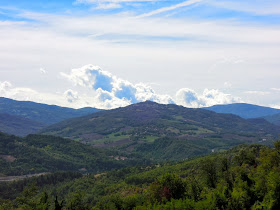


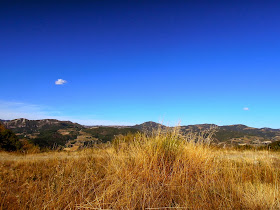

















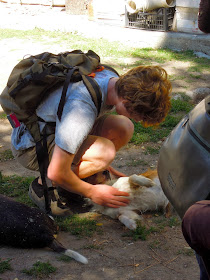







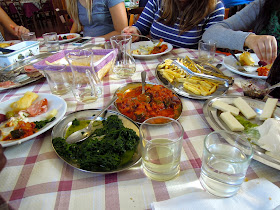
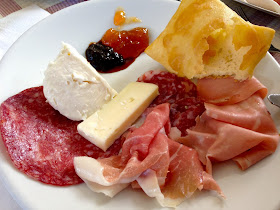


No comments:
Post a Comment